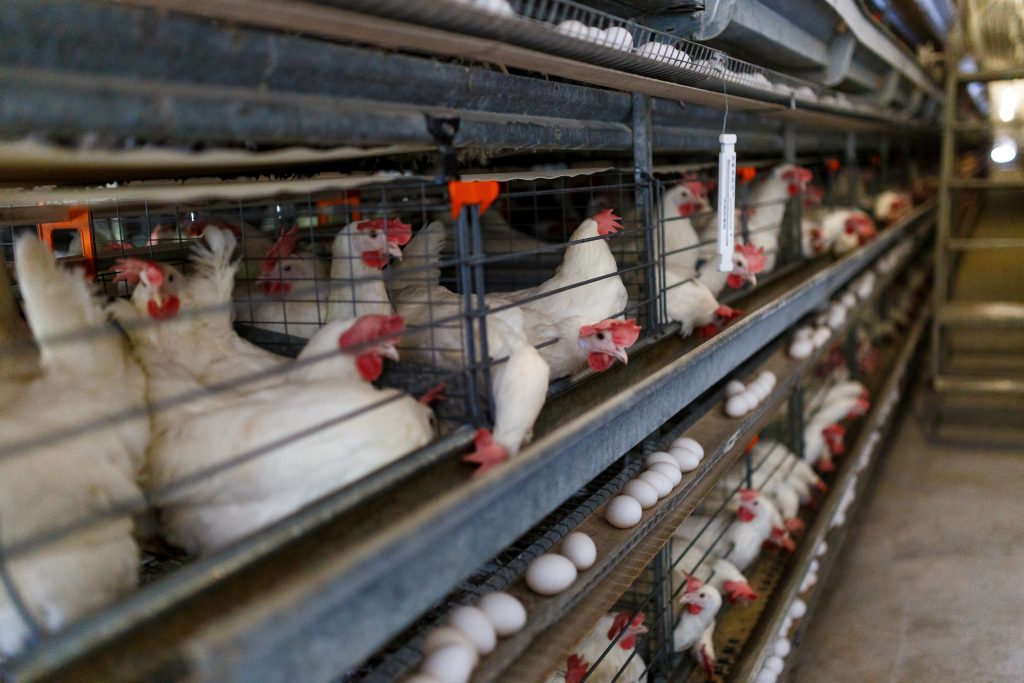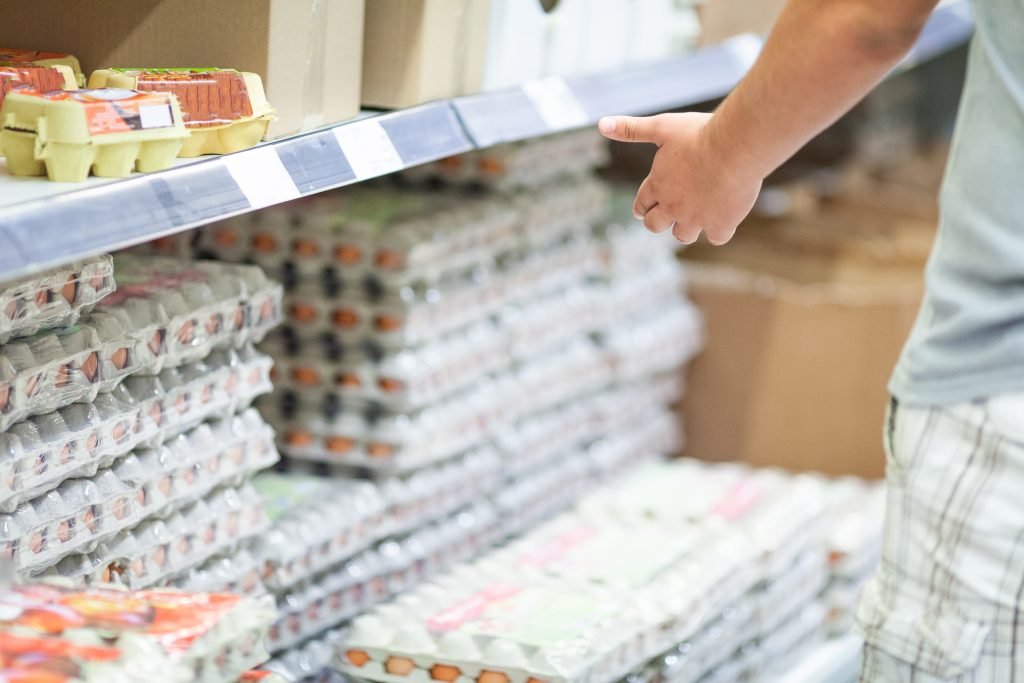Countless news outlets are abuzz with news of sky-high egg prices — but they’re burying the lede: Egg companies have somehow managed to rake in record profits while bellyaching about avian flu and inflation.
Let’s take a look at Cal-Maine Foods, the largest producer and distributor of eggs in the United States. The company increased its gross profit margins five-fold after drastically raising the price of its eggs. If avian flu and inflation are so heavily impacting egg supply and production costs, why are Cal-Maine’s profits skyrocketing? It’s time to unravel the egg industry’s scheme.
Egg Prices Are Soaring
After enduring a year of crushing inflation rates, consumers are still getting squeezed everywhere they turn. Americans faced a nearly 12 percent increase in grocery prices over the last year, but shocking egg prices have captured the nation’s attention in recent weeks. The average cost of a carton of eggs has increased by 138 percent up to $4.25 a dozen — more than double the price from this time last year.
The Excuses
If there’s one thing we’ve learned about the abusive corporations controlling our food system, it’s that they love a good “market disruptor” to justify swindling money from consumers and farmers to line shareholders’ pockets. While consumers have become increasingly cash-strapped since the pandemic, corporations have enjoyed their most profitable two years since 1950 as their profits jumped 35 percent.
Take for example the 2019 fire at Tyson Foods’ Holcomb, Kansas meatpacking plant, which served as an excuse for beef packers to raise retail prices and cut the price paid to cattle producers — even though more cattle were processed in the weeks following the fire than before it. Or we can look to the fertilizer industry, which used excuses like shortages to hike up their prices over the past year. All the while, their own financial reports revealed they had additional capacity they were not utilizing.
The egg industry blames avian flu and inflation for increasing egg prices. These problems are certainly real — about 43 million egg-laying hens were lost due to the avian flu through December 2022, and input costs for producers have increased. But this begs the question — how are egg companies raking in so much money in light of these costly strains?
The Math Doesn’t Add up
Cal-Maine’s net average selling price for a dozen conventional eggs increased by 150.5 percent from a year ago. But the excuses for this price hike don’t stand up to the facts.
The USDA’s reporting refutes the egg industry’s narrative that the avian flu significantly decreased egg supply in the months following outbreaks. The average size of egg-laying flocks never dropped more than six to eight percent lower than it was a year prior. Moreover, the effect of the loss of egg-laying hens on production was itself blunted by “record-high” lay rates throughout the year, which increased by one to four percent. And there’s one other critical piece missing from this industry narrative — Cal-Maine, which controls 20 percent of the egg market, hasn’t reported a single case of avian flu at any of its facilities.

The lack of price competition from rival egg companies during this time adds further questions about current market dynamics within the egg industry. The USDA expected these market conditions would lead to increased egg production as rival egg companies would step in to capture some of that market share — but by December 2022, it was clear that it never materialized. When market dynamics don’t work as they’re expected to, it’s indicative of possible collusion between companies to keep prices high.
The egg industry has also deployed the reliable “inflation” excuse from its toolbox to justify its price hikes. Feed and fuel costs have indeed increased. Yet Cal-Maine’s own documents indicate that increased production costs did not justify their excessive increase in the price of eggs. In a presentation to investors just this month, Cal-Maine noted that total farm production and feed costs in 2022 were only 22 percent higher than they were in 2021.
Farm Action’s letter calling for an investigation into potential price gouging was featured on the Today Show.
Passing the Cost on to Consumers – and Then Some
The egg industry appears to be exaggerating the impact of avian flu and inflation to justify their price hikes, all so they can quietly (or so they hoped) boost their profits. Let’s call this what it is: price gouging. It’s time to investigate the egg industry and dispel its narratives.
In response to the Biden Administration’s “whole of government approach” to antitrust enforcement, Farm Action is calling on the FTC, DOJ, and USDA to coordinate their efforts to investigate and hold accountable any major egg companies engaging in price gouging or other deceptive practices. We are also encouraging state attorneys general to take action to protect their consumers against these abusive companies.
We’re fighting back against the industry’s narratives in the mainstream media to ensure greedy egg corporations can’t get away with taking advantage of consumers. Thanks to the coverage that our letter to the FTC generated on thousands of news outlets — including the Today Show, Reuters, Time, Fox Business, Vice, Yahoo Finance, CNBC, The Hill, AP, The Guardian, and CNN — these companies’ record profits and excuses are being exposed.
The American people shouldn’t be on the hook for padding the egg industry’s wallets. This isn’t over until somebody investigates.
Written and edited by: Jessica Cusworth, Dee Laninga, Angela Huffman, Joe Maxwell, and Basel Musharbash


